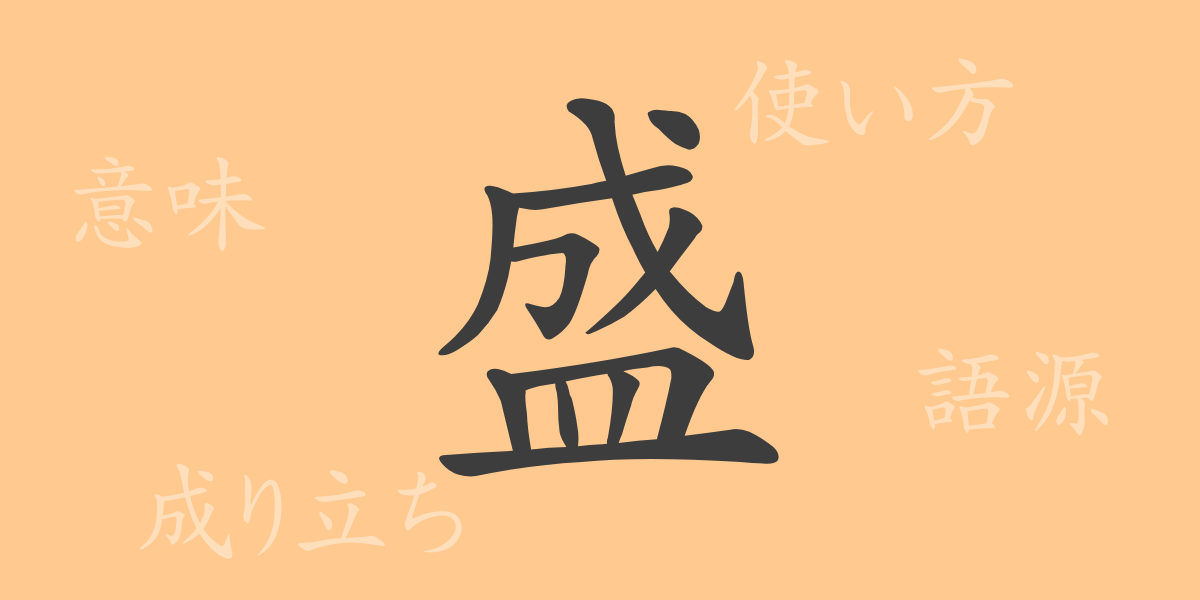The richness of the Japanese language is underpinned by its unique system of characters, each imbued with profound meanings and a rich history. The kanji ‘盛’ (もる/さかん) is no exception, frequently used in everyday conversations to express strong emotions. This article explores the origins, meanings, usages, readings, stroke count, radical, and related phrases and idioms of ‘盛’, uncovering the full extent of this character’s allure.
Origins of 盛
The kanji ‘盛’ originated in ancient China, depicted originally to represent strong winds. It evolved from pictographs that illustrated the fierceness of winds, ultimately used to express extreme conditions of nature. This depiction led to its use in emphasizing strong emotions or situations, like a gusty wind.
Meanings and Usages of 盛
In modern Japanese, ‘盛’ often implies ‘very’ or ‘extremely,’ utilized to express intense emotions such as excitement, astonishment, or fear, as in ‘盛な速さで走る’ (run at a tremendous speed) or ‘盛な勢いで仕事をこなす’ (work with terrific vigor). It denotes something exceptionally distinct or noticeable.
Readings, Stroke Count, and Radical of 盛
‘盛’ has multiple readings, reflecting the nuances of Japanese usage:
- Readings: On’yomi ‘セイ’, ‘ショウ’; Kun’yomi ‘すごい’, ‘すさまじい’
- Stroke Count: 10 strokes
- Radical: ‘冫’ (にすい)
Phrases, Idioms, and Proverbs Using 盛
‘盛’ appears in many idioms and proverbs, each deeply reflective of its inherent meaning:
- 盛絶 (せいぜつ): Extremely intense.
- 盛腕 (せいわん): Highly skilled or capable.
- 盛惨 (せいさん): Brutally intense or fierce.
- 盛烈 (せいれつ): Tremendously fierce or violent.
- 盛風 (せいふう): Extremely strong wind.
These expressions highlight the strong emotive and descriptive power of ‘盛’, portraying states or actions of intensity and vigor.
Conclusion on 盛
The kanji ‘盛’ not only denotes the stars in the sky but enriches our language with its ability to vividly convey intense emotions and dramatic states. Its usage in Japanese spans from everyday conversation to more poetic expressions, underscoring its versatility and profound impact on verbal and written communications. Understanding ‘盛’ enhances our appreciation of Japanese linguistic depth and its capacity to capture the complexities of human emotions and natural phenomena.

























